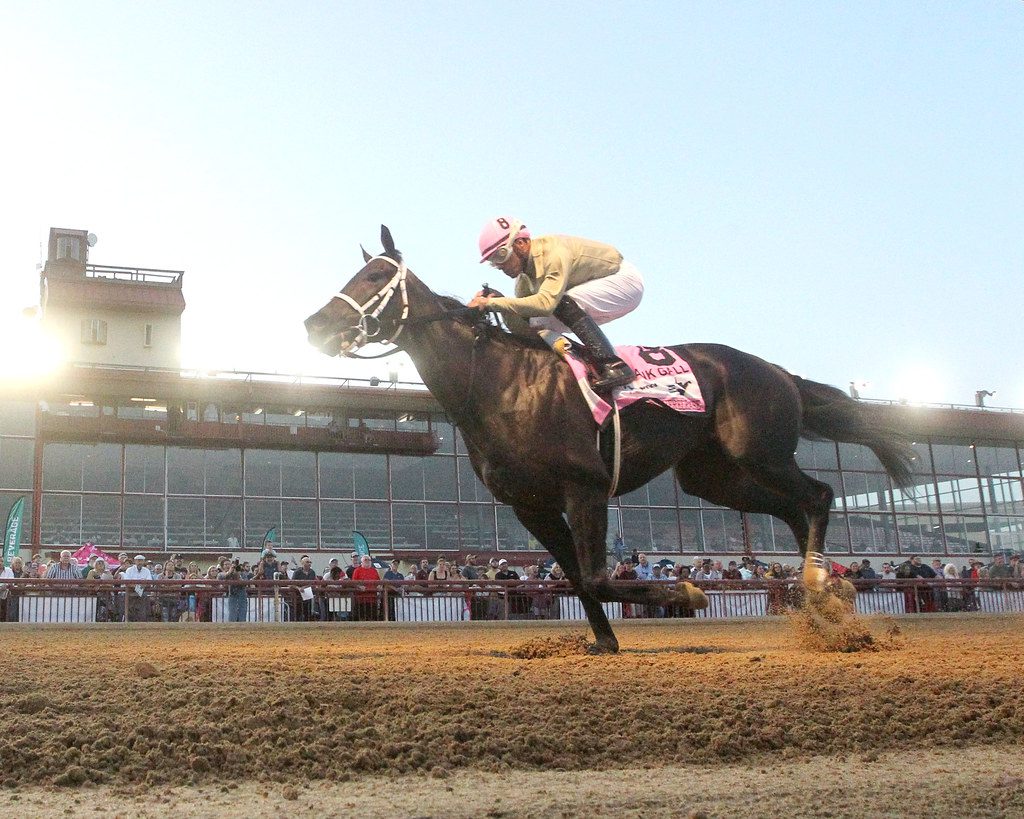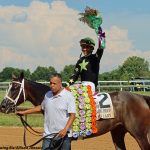Equibase remote charting initiative to start at Charles Town
Most of us don’t give any more thought to racetrack chart callers than we do to baseball statisticians.
But a proposal by Equibase, the company which employs the chart callers, to centralize many of them at a hub in Lexington, KY, rather than having them at the tracks they cover, is causing some angst in the industry. The first track which will go with fully remote chart-calling is Charles Town Races, and that is expected to begin in the new year.
“This can’t be a good thing,” Mike Sassin, the soon-to-retire longtime chart caller at Charles Town Races wrote on X, formerly Twitter.
“Another step in the steady decline of the industry,” one commenter responded.
Sassin, slated to retire at the end of the year, has been the lone chart caller at Charles Town for several years. Some other tracks, such as Laurel Park, have two on-site callers, while still others, like Colonial Downs, use a hybrid system with one caller on-site and another person remote.
Equibase pitches the change in part as a way to increase consistency and quality.
“It seems like a lot of times that our chart callers, who are the absolute core of what we do, have kind of all been out on an island by themselves a little bit,” said Equibase president Kyle McDoniel. “They do a great job, but I think at the same time we’ll be a lot better if we can have multiple people looking at, you know, have multiple eyes on races.”
In a traditional two-person setup, one watches the race live and makes the call. That is, at each point of call – at the start, after a quarter-mile, after a half-mile, and so on – he or she calls out where each horse is and how far ahead of the next one. The other person takes the call, writing that information down, and then when the race is over, writes the chart, including the comments we see in our past performances (e.g., “3 wide in range, faded”).
It’s specialized work that, in an era where relatively few people are interested in racing to start with, appeals to a very limited demographic. Combine that with relatively short racing seasons in many places and the concomitant need for chart callers to travel to where the racing is and you have the recipe for a shortage of top-quality callers.

Yet it’s vital to the betting public.
“As we’ve lost race days and things like that, it gets harder and harder to get somebody a full-time job at a track that’s running three days a week,” McDoniel said. “So I think what we’re trying to do is just get more and more efficient.”
McDoniel said that the plan is for the Lexington hub to have access to more cameras than are typically shown on the track’s feed, similar to what the stewards might see. But even so, some things may be hard to see for one reason or another: a horse who loses a rider briefly before the start of a race, or another fractious prior to loading in the gate. Those are things chart callers routinely pick up by watching races live.
The possibility that that information will go missing bothers Sassin.
“We won’t know if there’s a horse loose in the parade or fractious in the paddock or flipped or whatever,” he said. “I include all that stuff in my notes, even when a horse is a late scratch. For me, the whole thing is, there’s a faceless person with no accountability.”
What’s more, cameras typically are trained on the horses actively in the race. They may not locate a horse who, for example, is far behind the next closest horse or one who stumbles, loses the rider, and then turns around and runs back in the direction he’s just come. That latter situation took place a decade ago in a race at Charles Town.
McDoniel believes that the company can control for this.
“This is one of those things that as we start to go through it, start to learn, we may figure out we need some additional cameras in different places,” he said. “That’s something that we’ll evaluate in an ongoing basis.”
Charlie McIntosh, Charles Town’s director of racing operations, said that he expects to meet with Equibase staff in December and is taking a wait-and-see attitude on the change until he learns more. But he is very clear on what he doesn’t want to see impacted.
“One thing I don’t want to do is compromise the accuracy and the quality of our current charts,” McIntosh said. “I don’t want to back up with the footnotes at the bottom of the chart, you know? I think those notes are helpful, and I think they’re absolutely accurate. I think that’s important, and for me to embrace the new system, I’d have to have some assurances that we won’t compromise with that.”
To some handicappers, that’s precisely the concern: how can a chart dependent on cameras that may or may not capture everything that happens before, during, and after a race be as good as one with a human being on-site?
“This decision may save a few $$ but would seriously undermine credibility in data gathering,” former turf writer Marty McGee posted on X, formerly Twitter.
“Can think of so many reasons why this would be a horrible idea for bettors and all others invested in the sport,” responded Jay Privman, another (mostly) retired former turf writer.
Another concern is that racing’s introduction of new technologies has typically been ragged. When, for example, Laurel Park switched to the GMax timing system a few years back, the times were so inaccurate that the track had to switch back to the old beam timing until GMax could iron out the kinks. And of course, the chiclets showing the running order at many tracks routinely have horses in the wrong order.
But McDoniel, who said he expects many tracks, though not the major ones, to have remote chart-calling in the coming years, asked for patience.
“I would say: Don’t prejudge it,” he said. “We’re committed to putting the best product out there that we can. Are there things we’ll learn and things we’ll improve over time? Probably. But I’m happy to hear whatever criticism people have because that’s how we learn and that’s how we get better.”
LATEST NEWS
















“But McDoniel, who said he expects many tracks, though not the major ones, to have remote chart-calling in the coming years, asked for patience.” He’s actually stating the people in the field who aren’t at a major track, will eventually lose their job.
The majority of seasoned professionals in horse racing, including owners and trainers think this is a bad idea. But McDoniel, with zero previous experience in horse racing thinks it’s a great idea. This move simply consolidates the all content available to bettors is controlled by one source, with no independent thought.
This is obviously a money saving measure.
The calks are important to my handicapping
but occasionally I see mistakes.I suspect remotely
will greatly increase them.